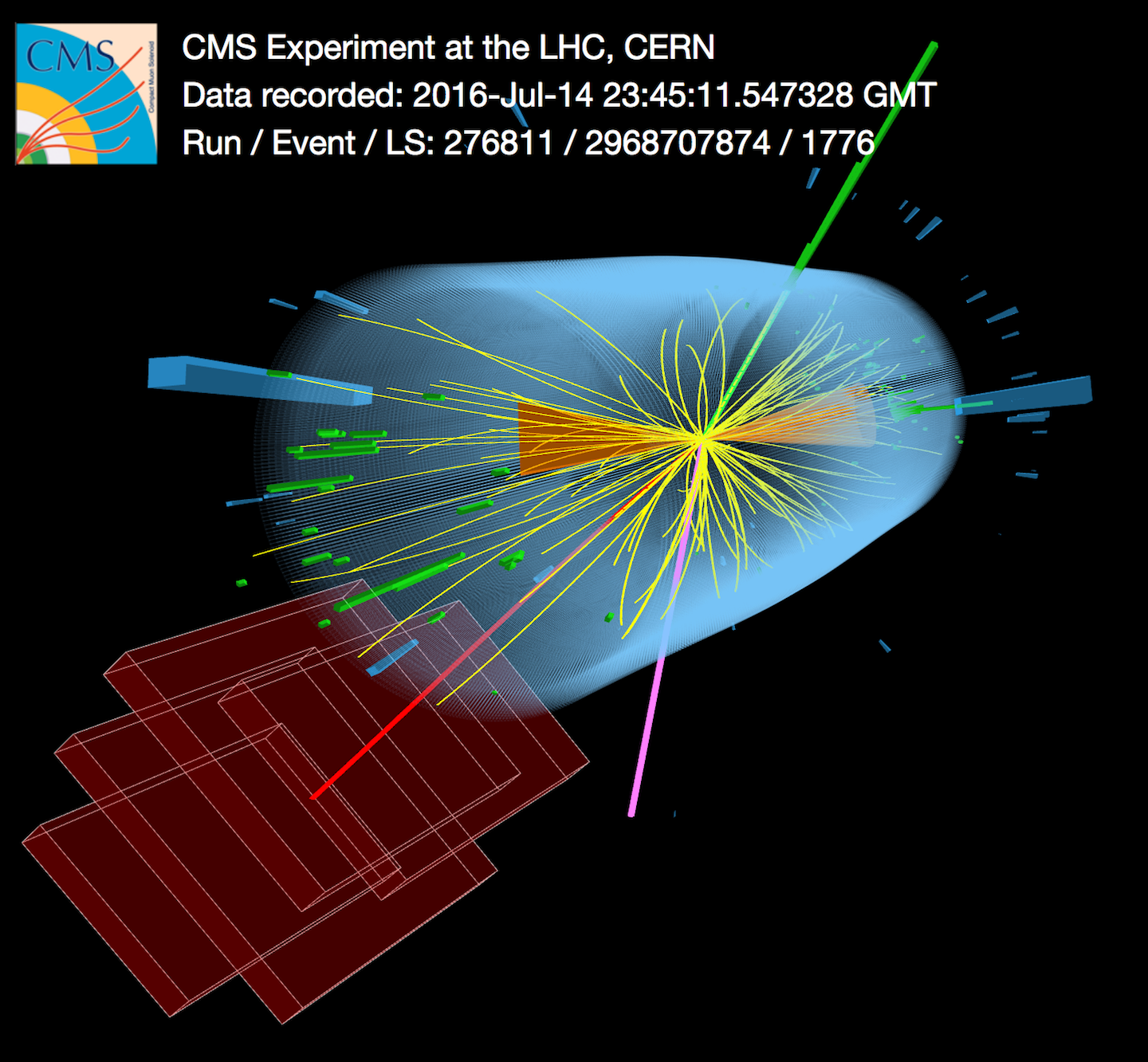CMS collaboration measured top-quark mass variation for the first time
World science, 14 October 2019
Measuring the mass of elementary particles, quarks for example, is challenging, but new results from the CMS collaboration (CERN) reveal for the first time how the mass of the top quark – the heaviest of six types of quarks – varies depending on the energy scale used to measure the particle.
The theory of quantum chromodynamics, a component of the Standard Model, predicts this energy-scale variation, known as running. Observing the running masses of quarks can therefore provide a way of testing quantum chromodynamics and the Standard Model.
More details on the CERN website
 A candidate event for a top quark–antiquark pair recorded by the CMS detector. Such an event is expected to produce an electron (green), a muon (red) of opposite charge, two high-energy “jets” of particles (orange) and a large amount of missing energy (purple). Image © CMS/CERN
A candidate event for a top quark–antiquark pair recorded by the CMS detector. Such an event is expected to produce an electron (green), a muon (red) of opposite charge, two high-energy “jets” of particles (orange) and a large amount of missing energy (purple). Image © CMS/CERN
Scientists of the Joint Institute for Nuclear Research take an active part in the CMS experiment at the Large Hadron Collider (LHC). JINR began to participate in CMS at the stages of preliminary research and development, and later became one of the main participants of CMS experiment.